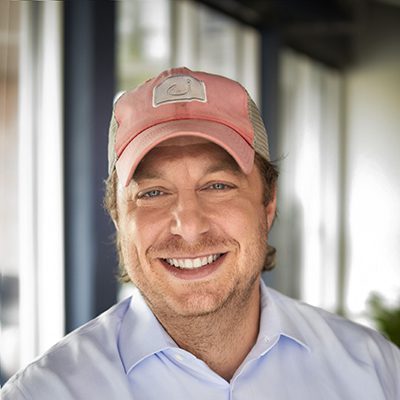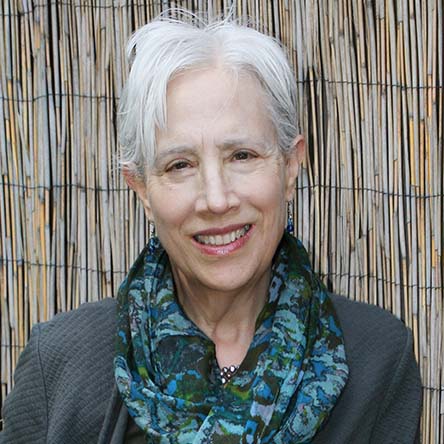Eastland and Westland Views
A Tale of Two Towns
n
To the hawk the two lands were not far. A few hours of hard flight perhaps, but with many updrafts for circling and trees on even the tallest ridges if the winds were not right and a rest was required, it could be pleasant. It was a flight the hawk took often, more in the summer than in the winter. There was good hunting for the hawk in the mountains. Even in winter, the rabbits and voles did not expect him.
n
For people in the two valleys the journey between the lands was arduous. There were no east to west passes through the mountains and the peaks had snow upon them even during the hottest summers. There were deep crevasses and high cliffs that made the trek seem foolhardy.u00a0
n
Unlike the hawk, few people made the journey over the mountain ridge that ran between the rivers all the way to the sea. Traveling was easier following the rivers. It was a long trip down the river valley from either land. The streams sources were at the ice field high above the laird’s house in each country and each ran away from the ridge, southwest in the western land and southeast in the eastern land, before curving back toward the ridge as they neared the sea.
n
It was said that these two lands had been to war in time beyond counting. The young laughed when the olds would tell the tale their olds had told them in their youth. u201cWhere would they have fought? Hanging off ropes on the cliff? Or at the bottom of some bottomless crevasse?u201du00a0
n
Traders would sometimes bring news between these communities, coming up one river from the sea, telling how they had braved the bandits in the foothills on beside the ridge. When traders came to Westland, they would speak of the yellow-glow of the sun on the ridge in the early hours of the Eastland day. Travelers to Eastland would tell of the red-glow on the Westland ridge at night. Mostlythough, these traders would tell how different Eastland and Westland were.
n
The tone in the tavern in each land was always incredulous, u201cI canu2019t believe it! Why would anyone live like that?u201d
n
On the surface, both lands looked alike. There was farmland in the plateau and valley,u00a0 with somewhat rocky soil on the ridge plateau and richer loam in the valley closer to the river. The lairdu2019s house was built into the side of the mountain overlooking the village and farmland. One difference was that Eastlandu2019s Lairdhouse was built of stone with a tower and Westlandu2019s Lairdhouse was built in a half-timbered style. Each was larger house than any in land, but that was accepted. The lairdu2019s family first cleared the land and invited others to farm it.
n
Over time both Eastland and Westland farmers had come to u201cownu201d their land and their homes they built upon it. They paid the laird a u201cdebt of gratitude,u201du00a0 a percentage of each harvest. The population was like many towns. Most everyone farmed, at least enough to pay the debt of gratitude and feed themselves,u00a0 but there were some merchants, who bought and sold surpluses and interacted with the traveling traders. There were tradesmen, builders, a metalsmith, and a few woodsmiths, who made furniture, staircases for those wealthy enough for a second story, and carved signs.
n
Both communities had a plethora of beautifully carved wooden signs. There were signs for business names. street names, and to identify who lived in a particular dwelling, but many of the most skillfully carved signs extolled particular virtues. Most of those exquisitely carved signs were paid for by the laird or esteemed elders in the village. There was a small competition in both Eastland and Westland to see which carver was most sought-after, based upon his or her carving skill with the lairdu2019s signs.
n
There were indeed many similarities between Eastland and Westland. There first indicator of difference travelers would notice were the signs. The signs in both communities were carved from the local woods and while one carver or another might have a particularly creative flourish, overall the signs looked similar. However, the messages on the signs were quite different.
n
In Eastland the carved signs read:
n
- n
- Self-Reliance
- Discipline
- Personal Responsibility
n
n
n
n
In Westland the signs said:
n
- n
- Teamwork
- Compassion
- Community
n
n
n
n
Traders who travelled often to both villages heard of other differences between the settlements:
n
In Eastland the debt of gratitude, paid to the laird was low, about 10 % of crops or livestock, and the same on service or trade, and everyone paid the same percentage. In Westland the debt of gratitude varied depending on how good a farmeru2019s harvest was or the service or trade amount transacted. Some paid 5% some paid as much as 25%.
n
In Westland there was a disaster-kitty funded by the debt of gratitude payments. Thisu00a0 flood and fire relief was administered by the village council of elders. In Eastland, someone whose crop flooded, or house burned down could apply to the laird for a loan at interest below the debt of gratitude rate, but might have to forfeit property rights if the loan was not repaid.
n
In Eastland crop surpluses were sold to the traders who came from down river. In Westland surpluses were also traded, but after the Food Fair Exchange was held. The Food Fair Exchange was an Eastland festival where farmers brought surplus to barter for what they didnu2019t grow or for volunteer labor.
n
Some traders said that Eastlanders complained a bit about the u201csize of the lairdu2019s houseu201d and how u201csome town council members got extraordinary benefits.u201du00a0 Other traders said that Westlanders complained about u201cfreeloadersu201d and the size of the debt of gratitude payment in good years. Most years, Eastland and Westland were equally prosperous and everyone seemed happy.
n
The hawk flew back and forth across the ridge, not hunting now, just gliding up with the warm afternoon air rising from each side. He flew high eyeing the rivers in the valleys on both sides. The hawk played in the air currents rising from each side, circling, swooping, all the way down the ridge until he felt the cool sea wind. The hawk pulled up against the spray where the sea roared against the cliff and scented the woodsmoke rising from the building near the cliff, before climbing back, back to his nest in the tall fir just below the summer snowline.
n
Traders often met at the Ridgecliffe Inn, on the path over the ridge close to the sea where you could see the delta ports on both the Eastland and Westland rivers. Ridgecliffe was a gathering place for traders and anyone traveling between the two communities. In the tavern of the Inn, traders traded stories of their travels and often bantered about the signs.
n
u201cI was up at Eastland and saw a new sign, u201cThe Truth is the Truth, no matter if it hurts.u201d
n
u201cYeah, well his cousin in Westland carved u201cTact! People have feelings.u201d
n
Hard to beat the Eastlands sign, u201cBe Excellent!u201d
n
u201cDoes the Westland sign u2018Be Excellent to Each Otheru2019u201d mean the same thing?u201d
n
u201cDifferent, I think.u201d Like Eastlands u201cJudgement: Do What is Right!u201d is different from Westlandu2019s u201cJudgement: Explain your thinking.u201d
n
u201cYou know I saw one sign in both places u2018Honor, Duty, Sacrifice.u201d
n
u201cYou can bet those signs have different meanings.u201d
n
There were manyu00a0 nods and smiles around the tavern.
n
The oldest trader spoke, u201cYou know my favorite signs:
n
Eastland: u2018The early bird gets the worm.u2019u201d
n
Westland: u2018The second mouse gets the cheese.u2019u201d *
n
Everyone laughed.
n
u201cGreat to be a woodcarver in either place.u201d
n
u201cThatu2019s for sure. Say – where would you settle down if youu2019d a mind to?u201d
n
The traders all expressed their views and were quite surprised that they didnu2019t agree.
n
Where would you settle down if youu2019d a mind to?
n
u00a0
n
u00a0
n
u00a0
n
*Thanks to Brad Martin and his daughter Melissa for this line.
“,”tablet”:”
A Tale of Two Towns
n
To the hawk the two lands were not far. A few hours of hard flight perhaps, but with many updrafts for circling and trees on even the tallest ridges if the winds were not right and a rest was required, it could be pleasant. It was a flight the hawk took often, more in the summer than in the winter. There was good hunting for the hawk in the mountains. Even in winter, the rabbits and voles did not expect him.
n
For people in the two valleys the journey between the lands was arduous. There were no east to west passes through the mountains and the peaks had snow upon them even during the hottest summers. There were deep crevasses and high cliffs that made the trek seem foolhardy.
n
Unlike the hawk, few people made the journey over the mountain ridge that ran between the rivers all the way to the sea. Traveling was easier following the rivers. It was a long trip down the river valley from either land. The streams sources were at the ice field high above the laird’s house in each country and each ran away from the ridge, southwest in the western land and southeast in the eastern land, before curving back toward the ridge as they neared the sea.
n
It was said that these two lands had been to war in time beyond counting. The young laughed when the olds would tell the tale their olds had told them in their youth. u201cWhere would they have fought? Hanging off ropes on the cliff? Or at the bottom of some bottomless crevasse?u201d
n
Traders would sometimes bring news between these communities, coming up one river from the sea, telling how they had braved the bandits in the foothills on beside the ridge. When traders came to Westland, they would speak of the yellow-glow of the sun on the ridge in the early hours of the Eastland day. Travelers to Eastland would tell of the red-glow on the Westland ridge at night. Mostlythough, these traders would tell how different Eastland and Westland were.
n
The tone in the tavern in each land was always incredulous, u201cI canu2019t believe it! Why would anyone live like that?u201d
n
On the surface, both lands looked alike. There was farmland in the plateau and valley, with somewhat rocky soil on the ridge plateau and richer loam in the valley closer to the river. The lairdu2019s house was built into the side of the mountain overlooking the village and farmland. One difference was that Eastlandu2019s Lairdhouse was built of stone with a tower and Westlandu2019s Lairdhouse was built in a half-timbered style. Each was larger house than any in land, but that was accepted. The lairdu2019s family first cleared the land and invited others to farm it.
n
Over time both Eastland and Westland farmers had come to u201cownu201d their land and their homes they built upon it. They paid the laird a u201cdebt of gratitude,u201d a percentage of each harvest. The population was like many towns. Most everyone farmed, at least enough to pay the debt of gratitude and feed themselves, but there were some merchants, who bought and sold surpluses and interacted with the traveling traders. There were tradesmen, builders, a metalsmith, and a few woodsmiths, who made furniture, staircases for those wealthy enough for a second story, and carved signs.
n
Both communities had a plethora of beautifully carved wooden signs. There were signs for business names. street names, and to identify who lived in a particular dwelling, but many of the most skillfully carved signs extolled particular virtues. Most of those exquisitely carved signs were paid for by the laird or esteemed elders in the village. There was a small competition in both Eastland and Westland to see which carver was most sought-after, based upon his or her carving skill with the lairdu2019s signs.
n
There were indeed many similarities between Eastland and Westland. There first indicator of difference travelers would notice were the signs. The signs in both communities were carved from the local woods and while one carver or another might have a particularly creative flourish, overall the signs looked similar. However, the messages on the signs were quite different.
n
In Eastland the carved signs read:
n
- n
- Self-Reliance
- Discipline
- Personal Responsibility
n
n
n
n
In Westland the signs said:
n
- n
- Teamwork
- Compassion
- Community
n
n
n
n
Traders who travelled often to both villages heard of other differences between the settlements:
n
In Eastland the debt of gratitude, paid to the laird was low, about 10 % of crops or livestock, and the same on service or trade, and everyone paid the same percentage. In Westland the debt of gratitude varied depending on how good a farmeru2019s harvest was or the service or trade amount transacted. Some paid 5% some paid as much as 25%.
n
In Westland there was a disaster-kitty funded by the debt of gratitude payments. This flood and fire relief was administered by the village council of elders. In Eastland, someone whose crop flooded, or house burned down could apply to the laird for a loan at interest below the debt of gratitude rate, but might have to forfeit property rights if the loan was not repaid.
n
In Eastland crop surpluses were sold to the traders who came from down river. In Westland surpluses were also traded, but after the Food Fair Exchange was held. The Food Fair Exchange was an Eastland festival where farmers brought surplus to barter for what they didnu2019t grow or for volunteer labor.
n
Some traders said that Eastlanders complained a bit about the u201csize of the lairdu2019s houseu201d and how u201csome town council members got extraordinary benefits.u201d Other traders said that Westlanders complained about u201cfreeloadersu201d and the size of the debt of gratitude payment in good years. Most years, Eastland and Westland were equally prosperous and everyone seemed happy.
n
The hawk flew back and forth across the ridge, not hunting now, just gliding up with the warm afternoon air rising from each side. He flew high eyeing the rivers in the valleys on both sides. The hawk played in the air currents rising from each side, circling, swooping, all the way down the ridge until he felt the cool sea wind. The hawk pulled up against the spray where the sea roared against the cliff and scented the woodsmoke rising from the building near the cliff, before climbing back, back to his nest in the tall fir just below the summer snowline.
n
Traders often met at the Ridgecliffe Inn, on the path over the ridge close to the sea where you could see the delta ports on both the Eastland and Westland rivers. Ridgecliffe was a gathering place for traders and anyone traveling between the two communities. In the tavern of the Inn, traders traded stories of their travels and often bantered about the signs.
n
u201cI was up at Eastland and saw a new sign, u201cThe Truth is the Truth, no matter if it hurts.u201d
n
u201cYeah, well his cousin in Westland carved u201cTact! People have feelings.u201d
n
Hard to beat the Eastlands sign, u201cBe Excellent!u201d
n
u201cDoes the Westland sign u2018Be Excellent to Each Otheru2019u201d mean the same thing?u201d
n
u201cDifferent, I think.u201d Like Eastlands u201cJudgement: Do What is Right!u201d is different from Westlandu2019s u201cJudgement: Explain your thinking.u201d
n
u201cYou know I saw one sign in both places u2018Honor, Duty, Sacrifice.u201d
n
u201cYou can bet those signs have different meanings.u201d
n
There were many nods and smiles around the tavern.
n
The oldest trader spoke, u201cYou know my favorite signs:
n
Eastland: u2018The early bird gets the worm.u2019u201d
n
Westland: u2018The second mouse gets the cheese.u2019u201d *
n
Everyone laughed.
n
u201cGreat to be a woodcarver in either place.u201d
n
u201cThatu2019s for sure. Say – where would you settle down if youu2019d a mind to?u201d
n
The traders all expressed their views and were quite surprised that they didnu2019t agree.
n
Where would you settle down if youu2019d a mind to?
n
n
n
n
*Thanks to Brad Martin and his daughter Melissa for this line.
“}},”slug”:”et_pb_text”}” data-et-multi-view-load-tablet-hidden=”true”>
A Tale of Two Towns
To the hawk the two lands were not far. A few hours of hard flight perhaps, but with many updrafts for circling and trees on even the tallest ridges if the winds were not right and a rest was required, it could be pleasant. It was a flight the hawk took often, more in the summer than in the winter. There was good hunting for the hawk in the mountains. Even in winter, the rabbits and voles did not expect him.
For people in the two valleys the journey between the lands was arduous. There were no east to west passes through the mountains and the peaks had snow upon them even during the hottest summers. There were deep crevasses and high cliffs that made the trek seem foolhardy.
Unlike the hawk, few people made the journey over the mountain ridge that ran between the rivers all the way to the sea. Traveling was easier following the rivers. It was a long trip down the river valley from either land. The streams sources were at the ice field high above the laird’s house in each country and each ran away from the ridge, southwest in the western land and southeast in the eastern land, before curving back toward the ridge as they neared the sea.
It was said that these two lands had been to war in time beyond counting. The young laughed when the olds would tell the tale their olds had told them in their youth. “Where would they have fought? Hanging off ropes on the cliff? Or at the bottom of some bottomless crevasse?”
Traders would sometimes bring news between these communities, coming up one river from the sea, telling how they had braved the bandits in the foothills on beside the ridge. When traders came to Westland, they would speak of the yellow-glow of the sun on the ridge in the early hours of the Eastland day. Travelers to Eastland would tell of the red-glow on the Westland ridge at night. Mostlythough, these traders would tell how different Eastland and Westland were.
The tone in the tavern in each land was always incredulous, “I can’t believe it! Why would anyone live like that?”
On the surface, both lands looked alike. There was farmland in the plateau and valley, with somewhat rocky soil on the ridge plateau and richer loam in the valley closer to the river. The laird’s house was built into the side of the mountain overlooking the village and farmland. One difference was that Eastland’s Lairdhouse was built of stone with a tower and Westland’s Lairdhouse was built in a half-timbered style. Each was larger house than any in land, but that was accepted. The laird’s family first cleared the land and invited others to farm it.
Over time both Eastland and Westland farmers had come to “own” their land and their homes they built upon it. They paid the laird a “debt of gratitude,” a percentage of each harvest. The population was like many towns. Most everyone farmed, at least enough to pay the debt of gratitude and feed themselves, but there were some merchants, who bought and sold surpluses and interacted with the traveling traders. There were tradesmen, builders, a metalsmith, and a few woodsmiths, who made furniture, staircases for those wealthy enough for a second story, and carved signs.
Both communities had a plethora of beautifully carved wooden signs. There were signs for business names. street names, and to identify who lived in a particular dwelling, but many of the most skillfully carved signs extolled particular virtues. Most of those exquisitely carved signs were paid for by the laird or esteemed elders in the village. There was a small competition in both Eastland and Westland to see which carver was most sought-after, based upon his or her carving skill with the laird’s signs.
There were indeed many similarities between Eastland and Westland. There first indicator of difference travelers would notice were the signs. The signs in both communities were carved from the local woods and while one carver or another might have a particularly creative flourish, overall the signs looked similar. However, the messages on the signs were quite different.
In Eastland the carved signs read:
- Self-Reliance
- Discipline
- Personal Responsibility
In Westland the signs said:
- Teamwork
- Compassion
- Community
Traders who travelled often to both villages heard of other differences between the settlements:
In Eastland the debt of gratitude, paid to the laird was low, about 10 % of crops or livestock, and the same on service or trade, and everyone paid the same percentage. In Westland the debt of gratitude varied depending on how good a farmer’s harvest was or the service or trade amount transacted. Some paid 5% some paid as much as 25%.
In Westland there was a disaster-kitty funded by the debt of gratitude payments. This flood and fire relief was administered by the village council of elders. In Eastland, someone whose crop flooded, or house burned down could apply to the laird for a loan at interest below the debt of gratitude rate, but might have to forfeit property rights if the loan was not repaid.
In Eastland crop surpluses were sold to the traders who came from down river. In Westland surpluses were also traded, but after the Food Fair Exchange was held. The Food Fair Exchange was an Eastland festival where farmers brought surplus to barter for what they didn’t grow or for volunteer labor.
Some traders said that Eastlanders complained a bit about the “size of the laird’s house” and how “some town council members got extraordinary benefits.” Other traders said that Westlanders complained about “freeloaders” and the size of the debt of gratitude payment in good years. Most years, Eastland and Westland were equally prosperous and everyone seemed happy.
The hawk flew back and forth across the ridge, not hunting now, just gliding up with the warm afternoon air rising from each side. He flew high eyeing the rivers in the valleys on both sides. The hawk played in the air currents rising from each side, circling, swooping, all the way down the ridge until he felt the cool sea wind. The hawk pulled up against the spray where the sea roared against the cliff and scented the woodsmoke rising from the building near the cliff, before climbing back, back to his nest in the tall fir just below the summer snowline.
Traders often met at the Ridgecliffe Inn, on the path over the ridge close to the sea where you could see the delta ports on both the Eastland and Westland rivers. Ridgecliffe was a gathering place for traders and anyone traveling between the two communities. In the tavern of the Inn, traders traded stories of their travels and often bantered about the signs.
“I was up at Eastland and saw a new sign, “The Truth is the Truth, no matter if it hurts.”
“Yeah, well his cousin in Westland carved “Tact! People have feelings.”
Hard to beat the Eastlands sign, “Be Excellent!”
“Does the Westland sign ‘Be Excellent to Each Other’” mean the same thing?”
“Different, I think.” Like Eastlands “Judgement: Do What is Right!” is different from Westland’s “Judgement: Explain your thinking.”
“You know I saw one sign in both places ‘Honor, Duty, Sacrifice.”
“You can bet those signs have different meanings.”
There were many nods and smiles around the tavern.
The oldest trader spoke, “You know my favorite signs:
Eastland: ‘The early bird gets the worm.’”
Westland: ‘The second mouse gets the cheese.’” *
Everyone laughed.
“Great to be a woodcarver in either place.”
“That’s for sure. Say – where would you settle down if you’d a mind to?”
The traders all expressed their views and were quite surprised that they didn’t agree.
Where would you settle down if you’d a mind to?
*Thanks to Brad Martin and his daughter Melissa for this line.
The post Eastland and Westland Views appeared first on Wisdom from Unusual Places.
Originally Published on https://wisdomfromunusualplaces.com/blog/

























